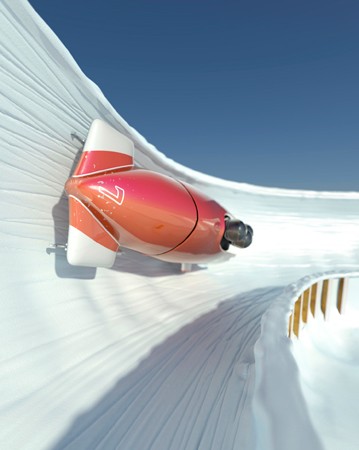Over at the JHU Press blog, theoretical physicist Mark Denny talks about the science of the Winter Olympics. For him, once the sport begins, "physics takes over."

Skiers hurtling down the side of a mountain. Bobsleds plummeting through an ice chute. Figure skaters spinning around really really fast. Makes sense. It's all vectors and momentum and kinetic energy and whatnot.
Here's a more nuanced take, from Denny:
There are three basic forces that dominate the movement of athletes: the force of gravity acting down; aerodynamic drag, which acts opposite to the direction in which the athlete is heading; and, in many sports, the centrifugal force that acts on athletes, such as bobsledders, who are moving around a curve. ...
In addition to these three basic forces, there are internal forces that act, as when a skier tucks in to reduce drag, or angulates to maneuver past a pole. Such internal forces are difficult to describe in detail, but if we are interested in only the overall movement of the athlete—where the skier is on the hill, not how she adjusts her stance at any given moment—then the science simplifies a lot, and we can make predictions (for example, about how long it will take a skier to descend a slope) quite accurately.
And, for a more colorful example, Denny gives us this:
Cross-country skiers struggling uphill may seem, to an armchair viewer, to indulge in a lot of uncoordinated effort that makes them resemble drunken octopuses on caffeine. Analyze the movements of these athletes, however, and you see that they couldn't be more efficient. Once you understand how much power these skiers are exerting, and realize that they exert that power for such extended periods, you'll hardly be surprised that, in past Winter Olympics, cross-country skiers have collapsed over the finish line.
Denny is the author of three books, including Gliding for Gold: the Physics of Winter Sports. All three books are published by the Johns Hopkins University Press.
Read more from JHU Press BlogPosted in Science+Technology








